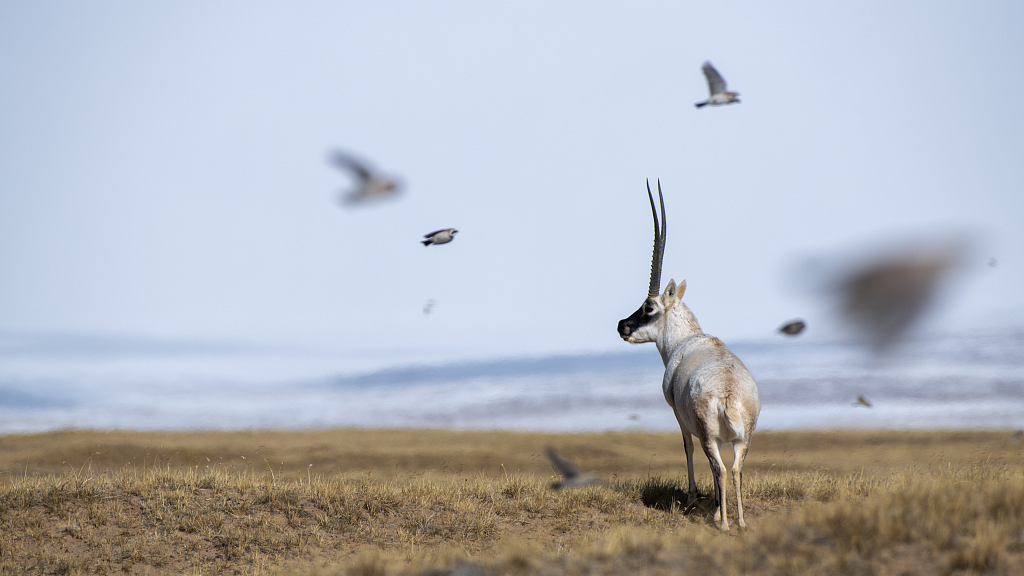The migration of Tibetan antelope is regarded as one of the most spectacular migrations of ungulates in the world. Every May to August, the vast majority of female Tibetan antelopes on the Qinghai-Xizang Plateau have a migration to give birth from the Three-River-Source region, the Altun Mountains and Qiangtang. Pregnant Tibetan antelopes will migrate to breeding ground which is hundreds of kilometers away, and then go back to their habitat with the newborn antelopes.
To trace their migration, staff from the Altun Mountain National Nature Reserve in northwest China's Xinjiang Uygur Autonomous Region formed a group to launch a series of monitoring and investigation activities.

Tibetan antelope stands still in Qinghai Province of northwest China. /VCG
Tibetan antelope stands still in Qinghai Province of northwest China. /VCG
According to Xu Junquan, deputy director of the Plateau Ecological Environment and Nature Conservation Research Office of Altun National Nature Reserve Administration in Xinjiang, the staff will collect some samples of muscle tissue from dead Tibetan antelopes they met, and analyze the DNA and genetic material, then compare them with those coming from Qiangtang and Hoh Xil to identify the differences between Tibetan antelopes from different regions.
The staff group will keep tracing the migration antelopes amid hot weather and snow. They aim to study the distribution, population, structure, and natural enemies of Tibetan antelope in the breeding ground area via sample collection and behavioral observation, and collect enough data for future research and management.
The Tibetan antelope is a once-endangered species. It is under first-class state protection in China, and is mostly found in the Xizang Autonomous Region, Qinghai Province and the Xinjiang Uygur Autonomous Region.
(If you have specific expertise and want to contribute, or if you have a topic of interest that you'd like to share with us, please email us at nature@cgtn.com.)